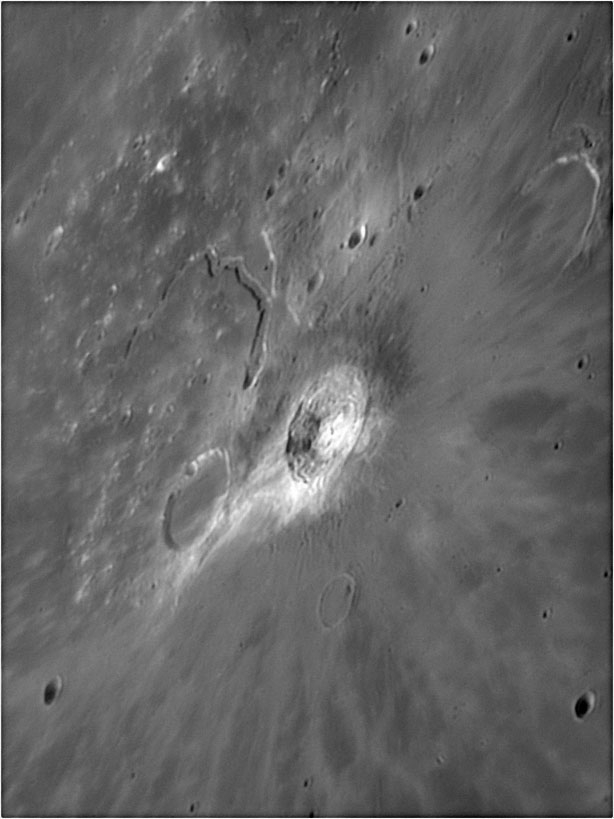|
||||||
|
|
||||||
|
Aristarchus is a prominent lunar impact crater that lies in the northwest part of the Moon's near side. It is considered the brightest of the large formations on the lunar surface, with an albedo nearly double that of most lunar features. The feature is bright enough to be visible to the naked eye, and is dazzling in a large telescope. It is also readily identified when most of the lunar surface is illuminated by earth-shine. The Aristarchus crater is located on an elevated rocky plateau, known as the Aristarchus plateau, in the midst of the Oceanus Procellarum lava plain. It is just to the east of the Herodotus crater and the Vallis Schröteri. Its brightest feature is the steep central peak. Sections of the interior floor appear relatively level, but Lunar Orbiter photographs reveal the surface is covered in many small hills, streaky gouges, and some minor cracks and rifts. The crater has a terraced outer wall covered in a bright blanket of ejecta, which spreads out into bright rays to the south and south-east. (These suggest that Aristarchus was most likely formed by an oblique impact from the northeast.) Observers have noted that the wall is roughly circular but has a somewhat polygonal shape.
|
|
|||||



